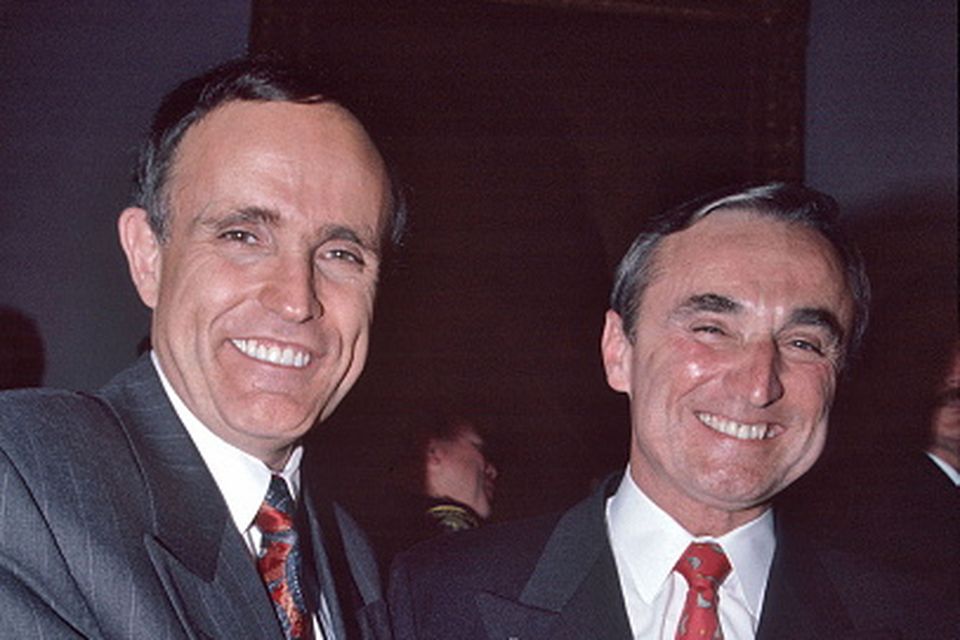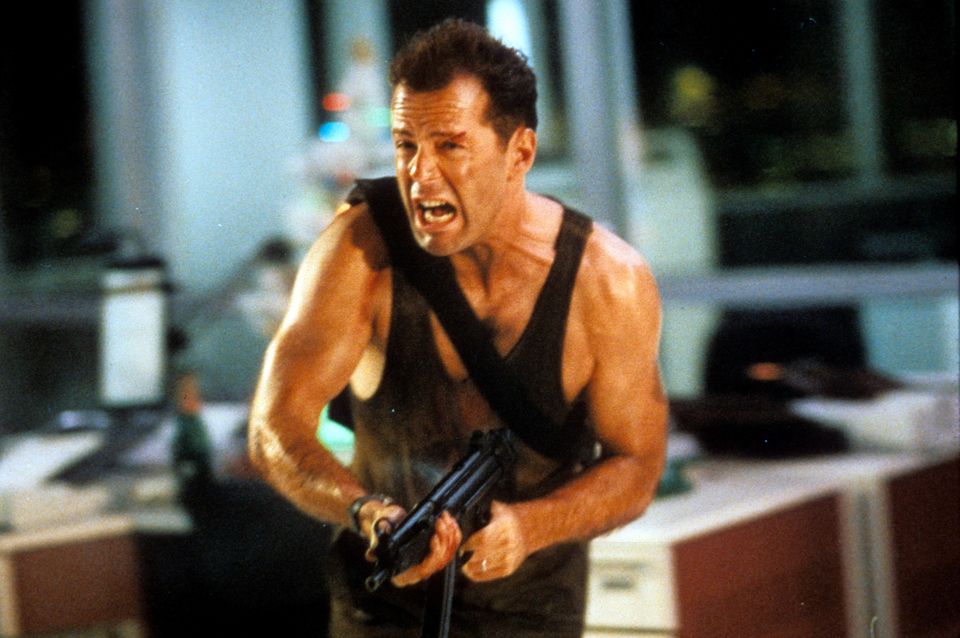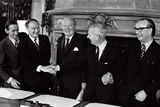John Daly: Dublin needs a crime clean-up of the kind seen in New York in the 1990s
NYPD Commissioner William Bratton tackled an out-of-control crime wave that plagued the Big Apple
NYPD Commissioner William Bratton, right, with then New York Mayor Rudy Giuliani in 1994. Photo: Getty Images
Burnt-out vehicles on city streets. Gangs of teens menacing pedestrians. Drug dealing with impunity. Shoplifting and aggressive begging. Add in an under-resourced police force hamstrung with red tape, and a punch-drunk population cowering in fear 24/7. Sound familiar? Such was the urban decay facing New York in the early 1990s – in many ways a mirror image of where Dublin is at today.
Though I was savvy enough not to expect a city similar to an episode of Friends or Seinfeld, it was hard not to wonder if moving there was a clever career move on discovering that the entrance of my building operated as a cocaine supermarket on weekends.
If you were looking to live somewhere “edgy”, Manhattan and its boroughs ticked all of the boxes – murders, burglaries, rape and petty crime in record numbers.
Taking the subway after 9pm was a virtual guarantee of assault, and every second parked car had notices taped on their windows – “Don’t bother, no radio”.
And just like Dublin today, everybody wondered how much worse was it going to get.
Then, into the unholy mess came William Bratton, a third-generation Irish-American cop, instituting “quality of life” policing. “If you deal with the little things, you can keep them from becoming big things” became his operational mantra. The year he took the “top cop” job there were 1,946 murders citywide. Two years later, it was down to 983.
Taking a “zero tolerance” approach to street crime, Bratton spearheaded the use of CompStat, a data-driven system that speedily allocated a mobile police force to high-crime areas.
The strategy of focusing on street-level offences, which included direct confrontation with group thuggery, successfully identified petty criminals likely to graduate to more serious crimes.
The traditional “cop on the beat” was central to the transformation. So too was the trust he engendered amongst New York’s finest – a straight-talking leader who always had his officers’ backs.
It was an era that lauded Bruce Willis in 'Die Hard'
In an era when Bruce Willis dominated cinema screens as the gutsy Big Apple cop in the Die Hard movies, we had found a real-life lawman with the brains to outwit the bad guys. “Yippie ki-yay” we chorused Bruce, as another bad hombre headed for the slammer.
Not alone did we see more foot patrol cops on the streets. We began talking with them in a social interaction that underpinned the brave new world taking shape.
We want to go from being ‘the police’ to being ‘your police’
“Any police strategy that does not address disorder and serious crime is doomed to failure – you cannot police a community without effectively working with the community,” he said.
And when he said, “We want to go from being ‘the police’ to being ‘your police’”, Bratton had the whole city in the palm of his hand.
The similarities between a broken New York in the early 1990s and the blighted Dublin of 2023 are startling – but so are the possible solutions. The time has never been better for an Irish version of Bratton to emerge. But come quickly – your country needs you.














.jpg)

